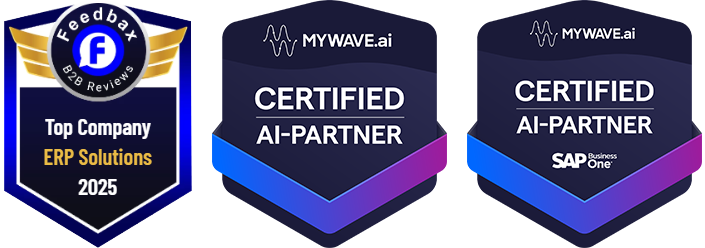
Effective financial management is crucial for any business aiming to achieve sustainable growth. SAP Business One Cloud offers a comprehensive suite of financial management tools that help businesses streamline their financial operations, enhance accuracy, and ensure compliance. This article will guide you through the process of implementing financial management in SAP Business One Cloud, highlighting its key features, benefits, and best practices. Introduction to SAP Business One Cloud SAP Business One Cloud is a powerful enterprise resource planning (ERP) solution designed for small to midsize businesses. It provides a range of functionalities, including financial management, inventory management, sales, and customer relationship management (CRM). The cloud-based nature of the solution ensures accessibility, scalability, and reduced IT overhead. Key Features of Financial Management in SAP Business One Cloud
- General Ledger:
- Comprehensive chart of accounts.
- Real-time financial data.
- Automated journal entries.
- Accounts Payable and Receivable:
- Streamlined invoicing and payments.
- Vendor and customer management.
- Aging reports.
- Banking and Reconciliation:
- Bank statement processing.
- Automated reconciliation.
- Cash flow management.
- Financial Reporting:
- Customisable financial reports.
- Real-time analytics.
- Integration with other business modules.
- Budget Management:
- Budget creation and tracking.
- Variance analysis.
- Financial forecasting.
- Accuracy and Efficiency:
- Automated processes reduce manual errors.
- Real-time data ensures accurate financial information.
- Cost Savings:
- Cloud deployment reduces IT infrastructure costs.
- Streamlined operations lower administrative expenses.
- Scalability:
- Easily adaptable to growing business needs.
- Flexible licensing options.
- Compliance and Security:
- Adherence to financial regulations and standards.
- Robust data security measures.
- Preparation and Planning
- Assess Current Systems:
- Evaluate existing financial management processes and systems.
- Identify gaps and areas for improvement.
- Define Objectives:
- Set clear financial management goals.
- Determine key performance indicators (KPIs).
- Select a Project Team:
- Include stakeholders from finance, IT, and management.
- Assign roles and responsibilities.
- System Configuration
- Set Up Chart of Accounts:
- Define the structure of your general ledger.
- Customise account groups and hierarchies.
- Configure Financial Modules:
- Accounts payable and receivable.
- Banking and reconciliation.
- Integrate with Other Modules:
- Ensure seamless data flow between financial management and other business processes.
- Integration with sales, inventory, and CRM.
- Data Migration
- Prepare Data:
- Cleanse and validate existing financial data.
- Map data fields to SAP Business One Cloud.
- Migrate Data:
- Use data migration tools provided by SAP.
- Test data migration to ensure accuracy.
- User Training and Testing
- Train Users:
- Conduct training sessions for finance team members.
- Provide user manuals and support materials.
- Test the System:
- Perform thorough testing of financial processes.
- Validate financial reports and reconciliations.
- Go-Live and Post-Implementation Support
- Go-Live Preparation:
- Finalise system configuration and data migration.
- Communicate go-live plan to all stakeholders.
- Post-Implementation Support:
- Monitor system performance.
- Provide ongoing user support and training.
- Conduct regular system audits and updates.
- Regularly Review Financial Reports
- Monthly and Quarterly Reviews:
- Analyse financial statements regularly.
- Identify trends and variances.
- Automate Report Generation:
- Schedule automated reports.
- Use dashboards for real-time insights.
- Maintain Data Integrity
- Data Validation:
- Regularly audit financial data.
- Implement validation rules.
- User Access Control:
- Define user roles and permissions.
- Limit access to sensitive financial data.
- Optimise Cash Flow Management
- Monitor Cash Flow:
- Use cash flow forecasts and reports.
- Identify potential cash shortages.
- Improve Collections:
- Streamline invoicing and collections processes.
- Offer multiple payment options to customers.
- Enhance Budgeting and Forecasting
- Create Realistic Budgets:
- Base budgets on historical data and future projections.
- Adjust budgets as needed.
- Perform Variance Analysis:
- Compare actual performance against budgets.
- Investigate and address variances.
- Ensure Compliance
- Adhere to Accounting Standards:
- Implement GAAP or IFRS standards as required.
- Regularly update compliance practices.
- Conduct Regular Audits:
- Schedule internal and external audits.
- Address audit findings promptly.





